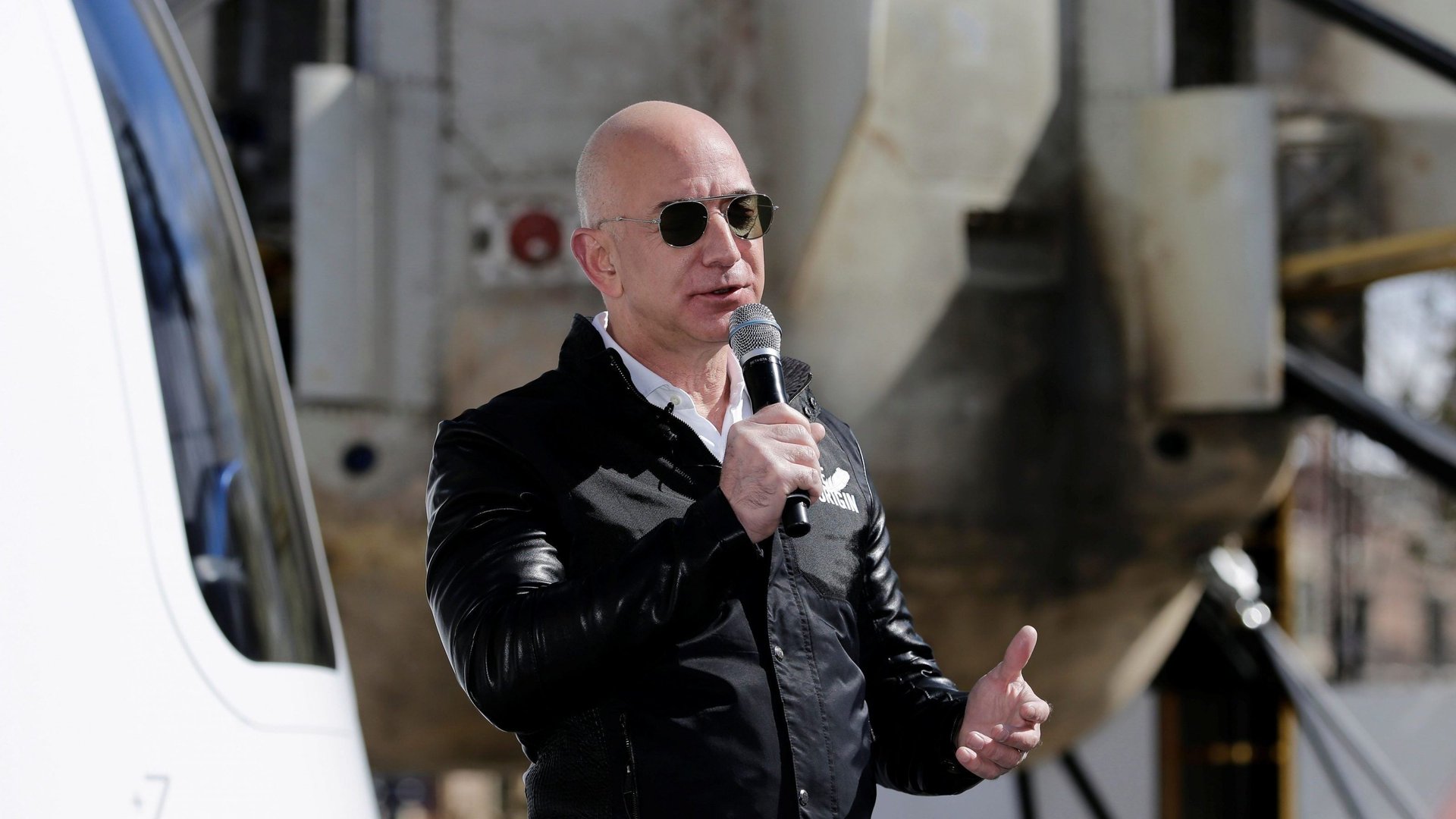The weird words and catchphrases that turned Amazon into a powerhouse
When I was in high school, I dreamed of going to college and being the BMOC—you know, the “Big Man On Campus.” (I fell way short). As a young analyst working in the finance industry, I was warned against committing a CLM—the “Career Limiting Move”—at the annual holiday party. And later in my career I’d pump myself up with an ABC pep talk—a reminder to “Always Be Closing.”


When I was in high school, I dreamed of going to college and being the BMOC—you know, the “Big Man On Campus.” (I fell way short). As a young analyst working in the finance industry, I was warned against committing a CLM—the “Career Limiting Move”—at the annual holiday party. And later in my career I’d pump myself up with an ABC pep talk—a reminder to “Always Be Closing.”
While I viewed these catchy acronyms as fun little motivational hacks, Amazon founder Jeff Bezos was quietly using the same approach to turn his online bookseller into a global e-commerce powerhouse, making himself the world’s richest person in the process.
Expanding a company’s revenue is hard. Scaling its culture and vision is even harder. It’s been well documented that things start getting weird as companies grow beyond 150 employees. Communication breaks down, process creeps in, and teams become more siloed. As Amazon plowed towards $1 billion of revenue, Bezos used rhetorical tricks to ensure that its growing staff was vigilant in maintaining its focus and priorities.
According to Eugene Wei, who worked at Amazon from 1997 to 2004 as a strategic planning analyst, Bezos sensed the “impossibility of scaling one’s own time to all corners of the organization, but (…) was laser focused on the more serious problem that presented, that of maintaining consistent strategy in all important decisions, many of which were made outside his purview each day.”
When I interviewed Wei on my Rad Awakenings podcast, he described how the BMOC (aka Bezos) encoded language to make it distinctive, concise, and memorable. Bezos would pick a theme for each year to rally the troops around that singular objective. One year it was “Get Big Fast, Baby.” Another year, Bezos was particularly concerned about how companies became complacent as they approached the billion-dollar revenue mark and wanted to head that off. Thus was born the year: GOHIO or “Getting our House in Order.” As Wei tells it:
“There was a contest to name the year and this was the most memorable name. You ask anyone at Amazon who was there at that year and they’ll say ‘Oh, there was that year of GOHIO with a concrete set of projects.’ You go to most companies today and ask them, what’s our theme this year, and they’ll have no idea. It seems silly to have a contest to name a theme, but it really hit home with every group of the company. You’d have [the acronym] repeated at every meeting.”
This type of rhetorical encoding also can be found in Amazon’s 2016 annual shareholder letter, in which Bezos states that he’s been reminding his team for years that it’s always Day 1 at Amazon (which he has indeed, dating back to the inaugural 1997 shareholder letter). What’s so important about Day 1 to give it such prominence in this letter and to even name a building after it? “Day 2 is stasis,” Bezos writes. “Followed by irrelevance. Followed by excruciating, painful decline. Followed by death. And that is why it is always Day 1.” Yikes.
I’ve never worked at Amazon and probably never will, but the phrase Day 1 is now singed into my memory. Now please excuse me while I GOHIO, so that my Day 2 never arrives.